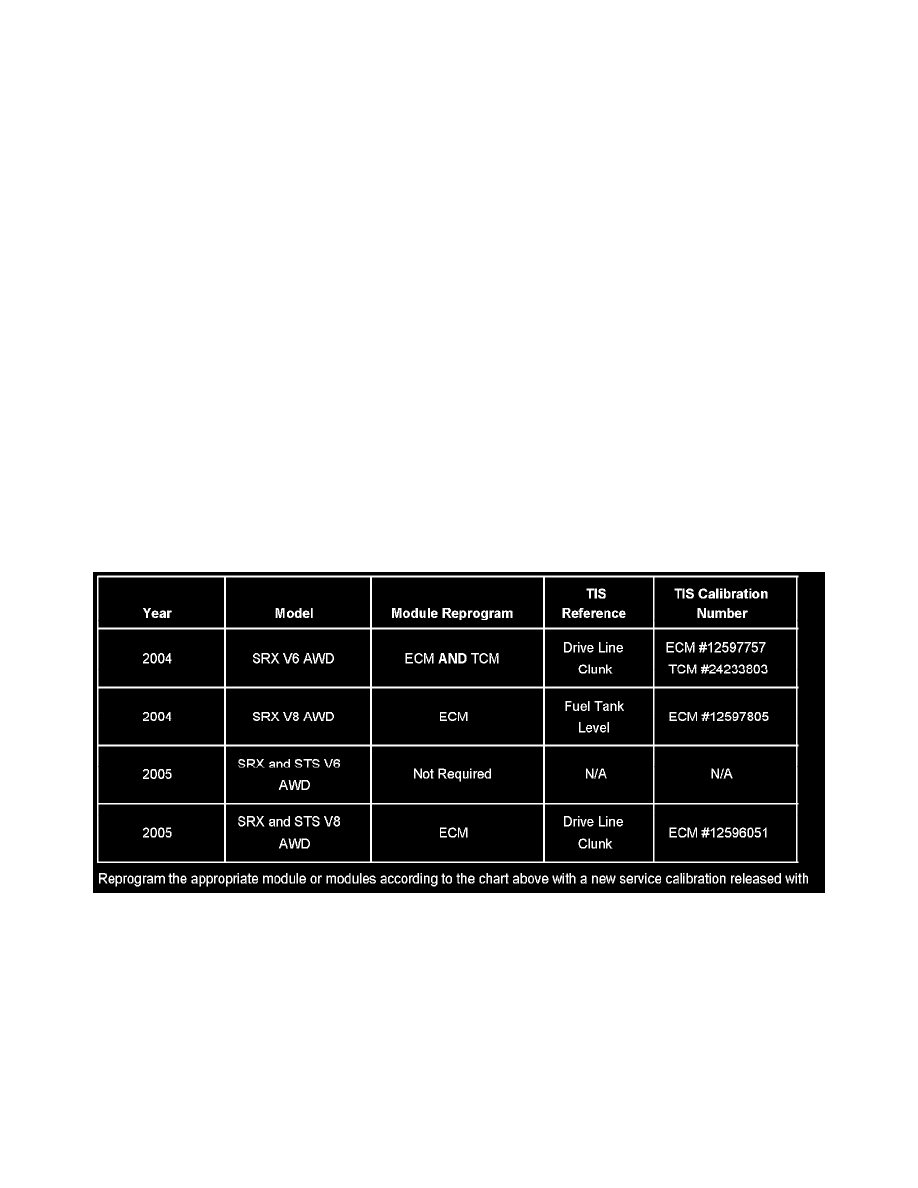SRX AWD V8-4.6L VIN A (2004)

PROM - Programmable Read Only Memory: All Technical Service Bulletins
Drivetrain - Clunk on Light Acceleration
Bulletin No.: 04-07-30-044
Date: December 10, 2004
TECHNICAL
Subject:
Driveline Clunk Noise On Light Acceleration (Tip In) and/or Deceleration (Tip Out) Most Noticeable At Lower Speeds and/or Firm Down Shift When
Coming to a Stop (Reprogram Transmission Control Module (TCM) and/or Engine Control Module (ECM))
Models:
2004-2005 Cadillac SRX
2005 Cadillac STS
with Transmission 5L40-E (RPO MX5) or Transmission 5L50-E (RPO MV3) and All Wheel Drive (AWD) (RPO MX7)
Built Prior To November 1, 2004
Condition
Some customers may comment on a driveline clunk noise on light acceleration (tip in) and/or deceleration (tip out) most noticeable at lower speeds;
other customers may also comment on a firm/harsh coast down shift as the vehicle comes to a stop.
Cause
This condition may be caused by the TCM and or ECM calibrations.
Correction
Important:
^
The 2004 SRX AWD V6 requires reprogramming of BOTH the ECM and TCM calibrations. The TIS screen will reference a driveline clunk
concern for both calibrations.
^
The 2004 SRX AWD V8 requires reprogramming of ONLY ECM calibration. The TIS screen will reference a revised fuel tank level diagnostic
which does contain the driveline clunk concern calibration fix.
^
The 2005 SRX and STS AWD V6 DOES NOT require any reprogramming. The calibrations were introduced into these vehicles at the start of
the 2005 V6 AWD production.
^
The 2005 SRX and STS AWD V8 requires reprogramming of ONLY the ECM. The TIS screen will reference the drive line clunk concern.
^
TIS satellite data update version 10.5 on October 18, 2004 or newer. Refer to Service Programming System (SPS).
